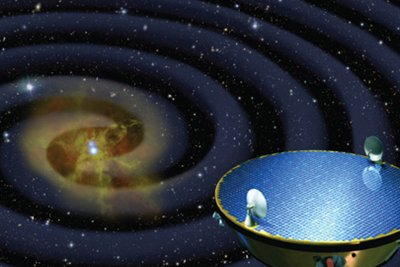 In astrophysics, a gravitational wave is a wavering or fluctuation in space-time, traveling outwards from the source. In short, it is like a ‘ripple in space-time', just like the small waves produced by a boat sailing through a sea. This is caused by large, moving celestial bodies such as stars and black holes. The more massive an object is, the more powerful the gravitational wave is produced. And the faster the movements of that source, more gravitational waves are propagated.
In astrophysics, a gravitational wave is a wavering or fluctuation in space-time, traveling outwards from the source. In short, it is like a ‘ripple in space-time', just like the small waves produced by a boat sailing through a sea. This is caused by large, moving celestial bodies such as stars and black holes. The more massive an object is, the more powerful the gravitational wave is produced. And the faster the movements of that source, more gravitational waves are propagated.
Such waves come from the interaction of two solid masses, such as black holes orbiting around each other, a merging of two galaxies, or two stars moving around one another. Binary star systems like white dwarfs and neutron stars are also sources of gravitational waves. Because of such interaction, they produce gravitational waves.
However, like waves in the water, they decrease in strength as they go farther away from the source. Scientists use various instruments to detect them from the Earth. Gravitational waves have never actually been detected ?directly?, but were rather ?indirectly? shown to exist.
The phenomenon of gravitational waves is predicted by Albert Einstein in 1916 basing on his theory of general relativity, where an object can cause fluctuations in a gravitational field.
